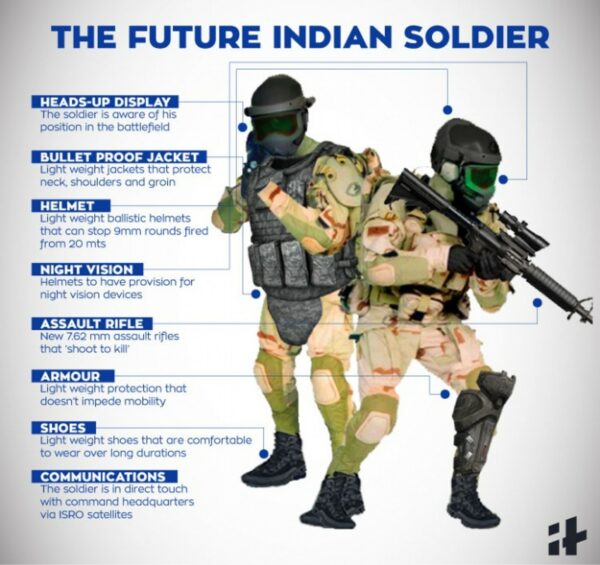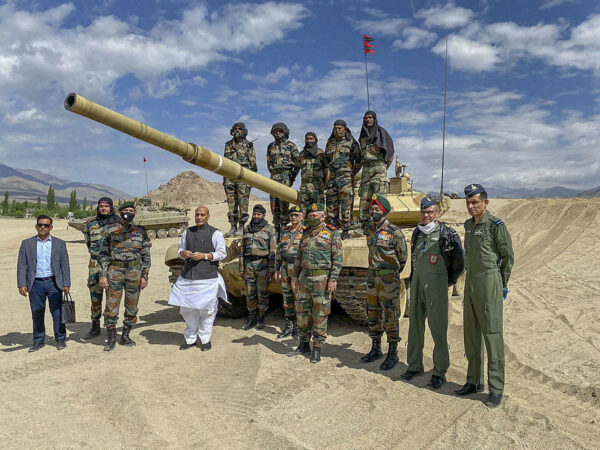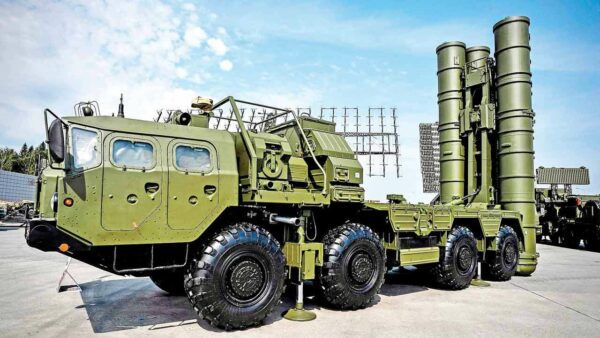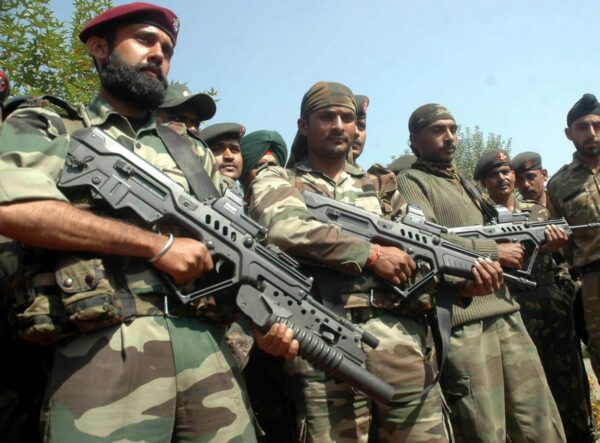
Equipment for the Indian Army must be made in India, according to the US, Russia, and others: Rajnath.
In response to regional geopolitical changes, Singh stated that God had blessed India with some neighbours unhappy with its progress. The one born out of the division is becoming weak and concerned about India’s prosperity.
Defence Minister Rajnath Singh said on Saturday that India has made it plain to the US, Russia, France, and others which military platforms and equipment are necessary by the Indian forces to cope with security issues must be created in the country. In response to regional geopolitical changes, Singh stated that God had blessed India with some neighbours unhappy with its progress. The one born out of the division is becoming weak and concerned about India’s prosperity.

India’s Relationships with the United States and Russia
There have been demands for a “pragmatic revival” of ties with India in the United States and the West. The Treaty of Friendship and Cooperation between India and Russia was signed during Russian President Boris Yeltsin’s visit to India in 1993. It took the Treaty of Peace, Friendship, and Cooperation signed in 1971. Security was a part of the Treaty previously, and the two countries committed to maintaining their peaceful and amicable relationship. A Treaty on cooperation in the military field was signed, and Yeltsin confirmed that India would receive cryogenic rocket engines despite US objections.
With the Declaration on Strategic Partnership signing during Russian President Vladimir Putin’s visit, Indo-Russian ties reached a new high and gained impetus. The Declaration on International Terrorism was signed during the visit of Indian Prime Minister Atal Bihari Vajpayee in November 2001. The west’s double standards on terrorism were denounced in this proclamation.
Even though Russia is no longer a superpower, its importance to India cannot be overstated. It has veto power as a permanent member of the Security Council of the UN. In addition, Russia is the only major foreign force that has backed India’s position on Kashmir and cross-border terrorism. It accuses Pakistan of fomenting religious extremism and terrorism in this world. The most recent expression of support for Kashmir was a joint statement published after Prime Minister Vajpayee’s three-day visit to Moscow in November 2003. Pakistan was to prohibit terrorists from infiltrating Jammu and Kashmir over the Line of Control and other locations along the border.
It further asked that Pakistan eliminate the terrorist infrastructure in Pakistan and Pakistan-controlled territory for substantive talks between the two countries. Russia is the most vociferous and unwavering backer of India’s bid for permanent membership in an enlarged Security Council permanent members of the Security Council of the UN.
Russia continues to be India’s most reliable source of high-quality military equipment. Russia provides more than 70% of India’s defence requirements, including cutting-edge military systems and technology. Fighter planes (MiG-21), battle tanks (T-72MI), helicopters, anti-tank missiles, anti-ship missiles, submarines, nuclear submarines (of the Akula-2 class), and aircraft carriers are defence exports by Russia. In January 2004, India agreed to restore Admiral Gorskhov and 12 Mig-29 fighter planes in a “historic agreement.” India will get the aircraft carrier in 2008.
India and Russia’s defence cooperation extends beyond acquisition to include manufacturing several of these military systems in India (e.g. Mig-27M, Sukhoi-30MK, T-72 tanks, and so on). Collaboration in research and development service collaborations are all part of it. One of the most notable examples is the Indo-Russian venture BrahMos, which designs, manufactures, and sells supersonic (flying faster than the speed of sound) Anti-Ship Cruise Missile Systems.
India and Russia have a long history of friendship. In the current geopolitical situation, their worldviews are pretty similar, this is backed up by their security and economic interests are aligned. The weakest link in an otherwise great relationship is traded between India and Russia. However, collaboration in new areas like energy and security has improved the economic relationship between the two countries.

There are a few areas where the bilateral relationship between the two countries might improve. Energy cooperation is one of them. India is becoming a major energy user. Russia’s oil and gas reserves and its experience in the thermal, hydroelectric, and nuclear energy sectors would be critical in assuring India’s long-term energy security.
Several thermal and hydroelectric projects have already been created with Soviet/Russian collaboration. Because Russia is the only major nuclear state to collaborate with India in the atomic market, India’s lofty atomic energy objectives require Russian cooperation.
“We have informed friendly countries that manufacture military systems, weapons, and ammunition in India itself, bearing the country’s security in mind,” he stated.
“We have sent this message to the United States, Russia, France, and others, and we will continue to do so,” he continued.
According to the defence minister, the appeal to countries producing military equipment is “Come to Make in India, Come Make for India, and Come Make for the World.”
Following his meeting with French Defense Minister Florence Parly on Friday, Singh said that it was determined that a large French enterprise has to build “an engine” in India through strategic cooperation with an Indian firm. He did not go into further detail.
India would maintain its connections with these countries, according to Singh, while pressing for major platforms to be built in India.

“We will continue our relationship,” the defence minister added, “but we will make whatever military equipment, weapons, and ammunition are required must be made in India.”
“I assert it vehemently and confidently. You’ll be glad to discover they’ve responded positively to my proposal “Singh said.
The government’s decision not to import 209 military products on a staggered timeline to support the indigenous defence sector was cited by the defence minister, hinting that the list may contain thousands of items.
“When I talk about ‘India Beyond 75,’ I believe that in this decade, this ‘good list’ will be approximately 1000 things long. I’m quite optimistic about it “he stated
The defence minister put the importance of “fair competition” between private and state enterprises, describing the corporatization of the almost 200-year-old Ordnance Factory Board as the most significant change in the defence industry since independence.

“India’s defence and aerospace industry market is now valued at Rs 85,000 crores. In 2022, it is anticipated to reach one lakh crore “he stated
The government has made initiatives in recent years to develop the local defence sector.
By 2024, India will stop importing 101 weapons and military platforms, including transport planes, light combat helicopters, conventional submarines, cruise missiles, and sonar systems, according to Singh.
A few months later, a second list was released, imposing import restrictions on 108 military weapons and systems, including next-generation corvettes, airborne early warning systems, tank engines, and radars.
The administration in May of last year announced that the automatic route FDI maximum in the defence industry will lift from 49% to 74%.
edited and proofread by nikita sharma






